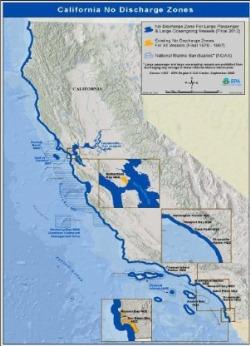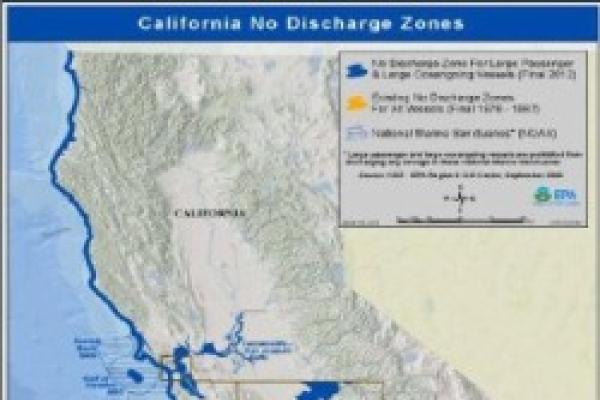
Steamship Mutual
Published: February 01, 2012

From March 2012 the following vessels will be prohibited from discharging all sewage, whether treated or not, while in California marine waters:
- Large Passenger Vessels over 300 gross tons or more that have berths or overnight accommodations for passengers
- Large Oceangoing Vessels over 300 gross tons, including private, commercial, government, or military vessels equipped with a holding tank with remaining capacity at time of entry or containing any sewage generated prior to entry to California marine waters.
California Marine Waters are defined as the territorial sea measured from the baseline as determined in accordance with the Convention on the Territorial Sea and the Contiguous Zone and extending seaward a distance of three miles, and all enclosed bays and estuaries subject to tidal influences from the Oregon border (41.999325 North Latitude, 124.212110 West Longitude, decimal degrees, NAD 1983) to the Mexican border (32.471231 North Latitude, 117.137814 West Longitude, decimal degrees, NAD 1983). A map illustrating these waters comprises part of the fact sheet which can be found at: www.epa.gov/region9/water/no-discharge/pdf/CaNdzFinal-RuleFactSheet.pdf.
Holding Tanks include any tank specifically designed, constructed, and fitted for the retention of treated or untreated sewage that has been designated and approved by the ship’s flag Administration on the ship’s stability plan; a designated ballast tank is not a holding tank for this purpose.
This No Discharge Zone overlaps with portions of the four NOAA National Marine Sanctuaries, adjacent to the California coast (see map), and is consistent with the existing prohibitions on vessel sewage from large passenger and large oceangoing vessels within the Sanctuaries.
Other California NDZs for ten bays and marinas remain in effect for all vessels.
The U.S. Coast Guard will inspect vessels for compliance with the no discharge zone. In order to verify compliance, the U.S. Coast Guard will use existing vessel examination and inspection authorities. The compliance examinations and inspections may include review of inspection records, visual inspections, evaluation of holding tank limits and review of any sewage logs, if applicable. The State can also enforce the NDZ.
The U.S. EPA estimates the Rule will prohibit the discharge of over 22 million of the 25 million gallons of treated sewage that large vessels could otherwise legally discharge into California State marine waters each year. Even treated sewage can contain pathogens, nutrients and other contaminants that affect human and environmental health, and economic productivity. Prohibiting large vessel sewage discharges provides additional protection of California’s marine water quality.
Further detail and background information can found on the dedicated “No Discharge” page of the EPA website at: www.epa.gov/region9/mediacenter/nodischarge/


